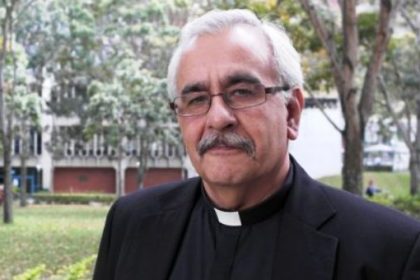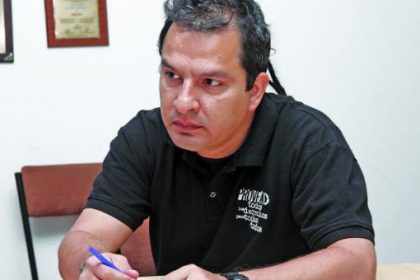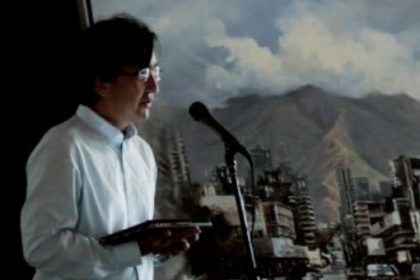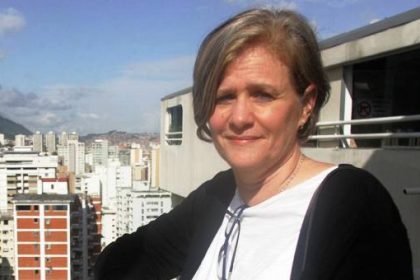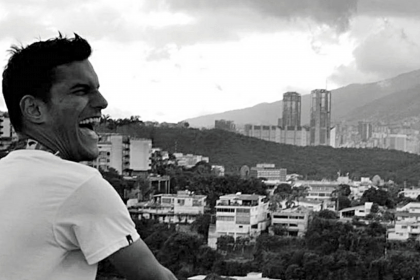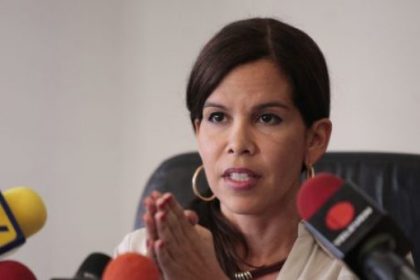By Margarita López Maya
What happened in Venezuela during 2017 was a historical protest cycle. Since 4 April -when the opposition parties of the National Assembly (AN, according to its acronym in Spanish) made a call to protest in rejection of the sentences handed down in March by the Supreme Court of Justice (TSJ, acronym in Spanish)- until 30 July -when the elections called by President Nicolás Maduro took place for the designation of Parliament Members who would form a National Constituent Assembly (ANC, acronym in Spanish)- the entire country lived in suspense. The NGO Observatorio Venezolano de Conflictividad Social (Venezuelan Observatory of Social Conflict in English) registered 6,729 protests in that period, an average of fifty-six daily. It also counted 428 looting situations and a balance of 163 deaths distributed in fourteen of the twenty-three states of the country . The wounded, an undetermined number that ranges among the 2,000 -stated by Attorney General Luisa Ortega Díaz- and over 10,000 when referred to opposition leaders. According to the NGO Foro Penal Venezolano (Venezuelan Criminal Forum in English), 5,326 people were arrested, out of which 1,068 remained in such condition during August, and 566 of them had been transferred to military courts. These figures far surpassed other relevant cycles during this Chavism era.
The protest cycles, according to the specialized literature, are rather scarce phenomena. The Venezuelan society has played a leading role over these during the past few decades. In that sense, it is proposed here to identify the aspects that, at the beginning of April 2017, drove this and contributed to its holding for almost four months.
What’s a cycle of protests and how does it start?
Venezuela, for those who are sceptical, has been living during the past three decades in a generalised situation of social conflict. It has not always resulted in cycles of protests, which are defined as an intense sequence of the contentious action during a sustained period of tie. In a cycle of protests the entire social system is affected and its characteristics include the quick spreading of the most mobilised sectors to the less ones, the acceleration of the belligerent method’s innovation, the framework of new or transformed collective action, a combination of organised and disorganised participation, as well as the sequences of intensive interaction sequences between challengers and authorities. The cycles finish in different outcomes. They can end in reforms, exhaust over tiredness or repression or, sometimes, lead to a revolution.
In order to explain which factors occur to open a cycle of specialist protests, it has been built the concept of structure over political opportunities. Thanks to this, it is ensured that political factors are more important than socioeconomic factors and such factors are external to the challenging groups. When they appear, incentives for mobilisation are created, due to the fact that they modify the expectations of success or failure. They can be advantageous for strong, weak and disorganised social actors, because they lower the cost of collective action. The following are the essential actions: the opening of participation channels such as social networks, participatory innovations or new means of communication, the appearance of external allies with influence willing to support demands, changes in the alignments within ruling groups and ruptures that are made visible in and among the elites. The structure of opportunities is a dimension of politics that is not necessarily formal and is usually not permanent.
Sustaining and controlling the collective action of a cycle also requires the presence of internal resources for the organisation of the challenging groups. That is to say, social groups or movements must be able to transcend individual and utilitarian points of view to coordinate diverse interests and create meanings, frameworks of action, that can be shared among those that are incorporated. The social power that breaks into a cycle lies in the actors’ ability to mobilise people they do not control. This power is a virtue, because it allows to mount collective actions without having the necessary resources to consolidate a base of support. But that autonomy of those who join also disperses the power of the movement, favors the factionalism and makes it vulnerable to desertion, competition and repression. The symbolic and subjective dimension, a shared narrative, is an essential part for the sustainability of the collective action of a cycle.
March reverted the hopelessness
2017 began with an atmosphere of disappointment. Having suspended the presidential recall for referendum and having stopped the previous year’s government-opposition negotiations, the perception of the citizens was that the opposition forces, gathered in the coalition party MUD, had not known or could finish the task of opening a channel to the democratic transition. Despite, on the one hand, the multitudinous demonstrations of support with which they had counted on and, on the other hand, the innumerable signs of the government’s weakness in the context of the global crisis, Maduro’s government had survived without making significant concessions.
From January to mid-March, the government, emboldened by the apathy it perceived in the opposition camp, continued to undermine the already weakened foundations of the democratic institutions in the country. It continued postponing the constitutionally-based elections, using the National Electoral Council (ANC), which was finding pretexts without keeping up appearances. The situation of economic hardship, shortage and insecurity, for its part, continued to worsen. These socioeconomic factors are usually necessary but insufficient to encourage a cycle by themselves.
In March, the ingredients of a structure over political opportunities appeared. In the middle of the month, the Secretary General of the OAS, Luis Almagro, published a second report on the Venezuelan crisis. He narrated there the sustained deterioration of the country’s internal situation since its first 2016’s report. He pointed out how all the steps taken -using the instruments contemplated in article 20 of the Democratic Charter- had failed to persuade Maduro to return to the constitutional thread. He suggested to the member countries to make a stronger call for attention and evaluate the possibility of suspending Venezuela from the OAS, if there was no sign of rectification in the following 30 days. On the 28th of that month, he convened a Permanent Council, an initiative that the Venezuelan government rejected and tried to cancel without success .
While this Council was held in Washington DC, two sentences were issued in Caracas by the Constitutional Chamber of TSJ, ruling on the final dismantling of the National Assembly (AN). Sentence 155 of the 27th granted the National Executive power to legislate in all criminal matters and ordered to govern according to the State of Exception and Economic Emergency that had declared the previous year, endorsed by a sentence also issued by the Supreme Court. This sentence was in contravention of the Constitution (CRBV, according to its acronym in Spanish), which requires that the approval of a State of Exception comes from the National Assembly (AN), which had already been rejected. The sentence, in addition, removed the parliamentary immunity of the opposition Members of the Parliament, based on a supposed “contempt” to its powers, for not having formally withdrawn the Members of the Parliament of Amazonas when it ruled indications of an alleged fraud in the parliamentary elections of 2015.
Upon this ruling, on the 28th the Members of the Parliament went to the headquarters of the National Assembly (AN) to hold a session on the matter. The ruling party, meanwhile, called its supporters to an act of support for sentences outside the Hemicycle. Officials of the Bolivarian Intelligence Service (SEBIN, according to its acronym in Spanish) appeared with long arms and covered faces, carrying trained dogs. Anti-riot police also appeared. When a National Assembly’s commission went to the Chavism act to protest and demand the postponed elections, two Members of the Parliament, Olivia Lozano and Gaby Orellano, fell to the floor. That day, TSJ issued another sentence, number 156, giving Maduro power to create joint ventures and carry out other activities in the field of hydrocarbons without authorisation from the National Assembly. It took advantage of the TSJ’s Constitutional Chamber to decide in that sentence that the TSJ, or whoever it had, would assume the powers of the AN while the alleged contempt lasted.
With these sentences, Maduro effectively canceled the Legislative Branch, which raised the alarm of the international community. The members of the OAS, meeting in Washington, agreed that the agency was responsible for mediating the political and social crisis in Venezuela. The following day, the head of the European Union’s Human Rights Commission wrote a letter to the MEPs, expressing their concern about the violation of fundamental rights in Venezuela and their intention to promote initiatives to guarantee political stability .
On the 30th, the president of the AN, Julio Borges, called a press conference to pronounce himself. There, in front of television cameras and with the opposition Members of the Parliament as witnesses, he proceeded to break with the decisions of the highest court: “This is simply trash. Trash of those who have kidnapped the Constitution and who have abducted the rights, and who have kidnapped the freedom of the Venezuelan people. This is what the sentence means to us.”
On Friday 31, in the presentation of the 2016’s management report of the Republic’s Office of the Attorney General, report that was being televised, the Prosecutor declared before the cameras that the sentences issued by the Supreme Court constituted a “rupture of the democratic constitutional order.” It recalled that Chávez had been the promoter of the CRBV and that this process had been an “open, popular, participatory and protagonist process.” With this position, an authority of a public power, belonging to the Citizen Power, which until then had aligned itself with Maduro’s directives, took distance, fissuring the block of domination.
On those same days, the political parties of the opposition coalition MUD called for a march in support of the AN on 4 April to demand the dismissal of the TSJ’s magistrates. It was planned to go from Plaza Venezuela to the Legislative Palace. This march, prevented from making its route by the Bolivarian National Guard and the Bolivarian National Police, managed to regroup on the Libertador Avenue at the height of Las Acacias Ave. and go to the western end of the highway, where repressive pickets returned to prevent its continuation. Repression was reported with pellets, tear gas and the water whale and the presence of armed groups on the Francisco Fajardo highway, where a group was marching. Thirteen detainees were reported. The opposition forces reconvened for the 6th. Led by the opposition parties of the AN, it began an unstoppable, intense, massive, extensive protest sequence throughout the geography of the country and predominantly peaceful.
Final comments
The cycle, unleashed by the events described, revealed the features that define this social phenomenon: a tireless social movement; novelty and creativity in the forms of protest; solidarity among those who participated; new and old actors in the public space; new narratives. The starring of young people was notorious, including Members of the Parliament from the student movement of previous years. However, the main objectives were not reached: the recovery of the constitutional thread, fair elections, release of political prisoners, authorisation for the arrival of humanitarian aid or the fall of President Maduro. The government seemed to weaken after the mass marches of 19 and 20 April, but shortly after the repression intensified. On 1 May, Maduro took the initiative to convene a Constituent National Assembly (ANC) with deputies that would be elected on 30 July on bases contrary to the Constitution (CRBV). Also, in the opposition ranks, and as a reaction to the atrocious repression, actors were present with violent forms of protest, which weakened participation and thereby led to the end of the cycle.
Every cycle of protests produces socio-political changes. In this one the appearance of new organisations, solidarities, symbolic and cultural codes was seen, the visibility of the Venezuelan crisis was accentuated internationally and the prestige of the government was shattered. Parties and movements must take advantage of these revenues to reinvest them in the continuation of collective action, because this is an essential component in the hard struggle that the opposition country is leading to achieve a democratic transition for Venezuela.
—


